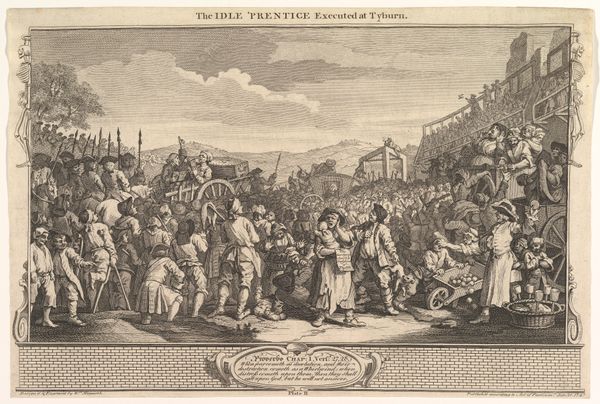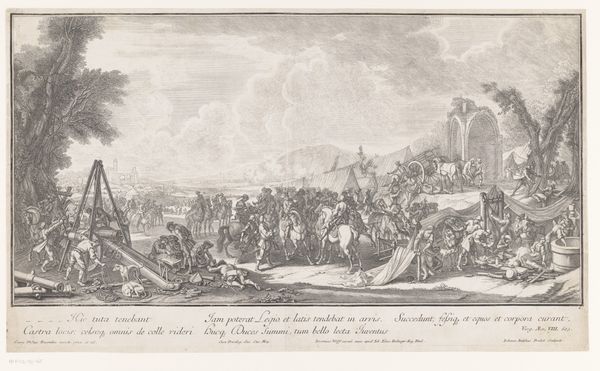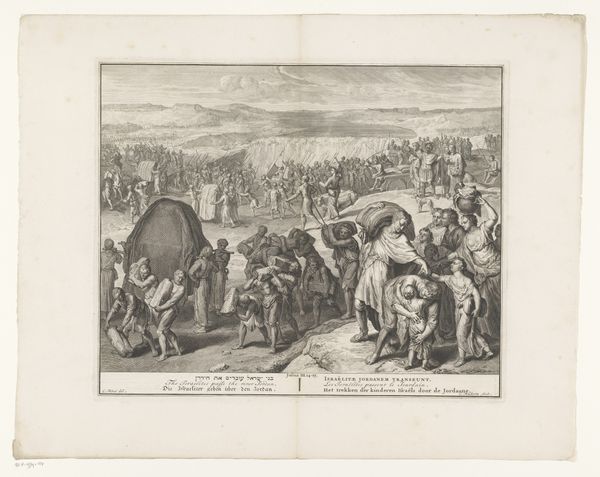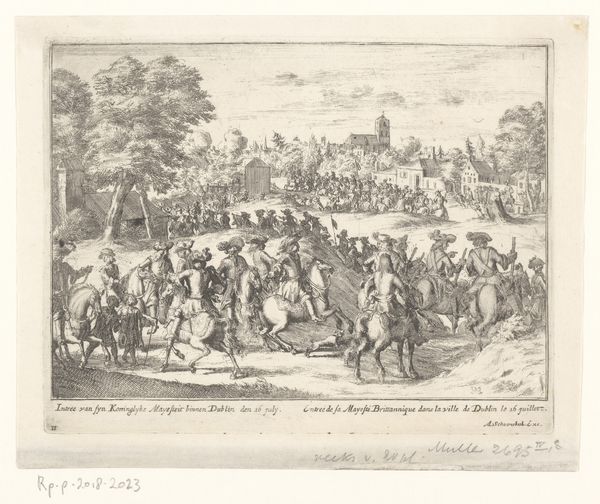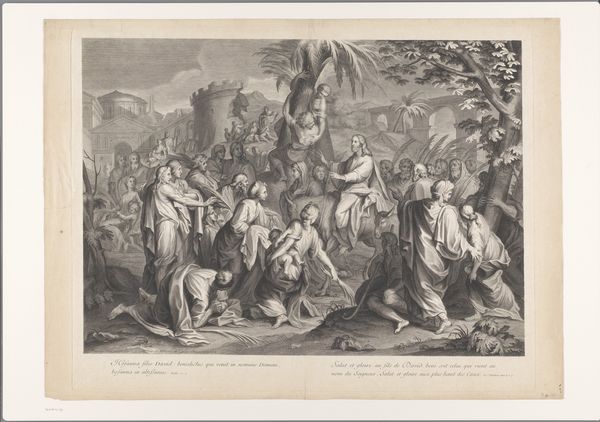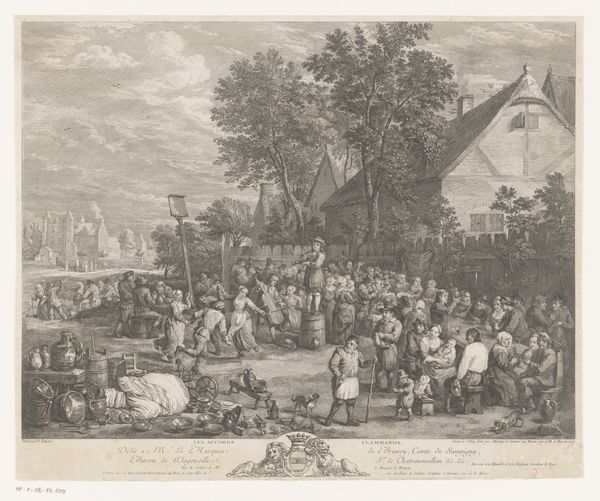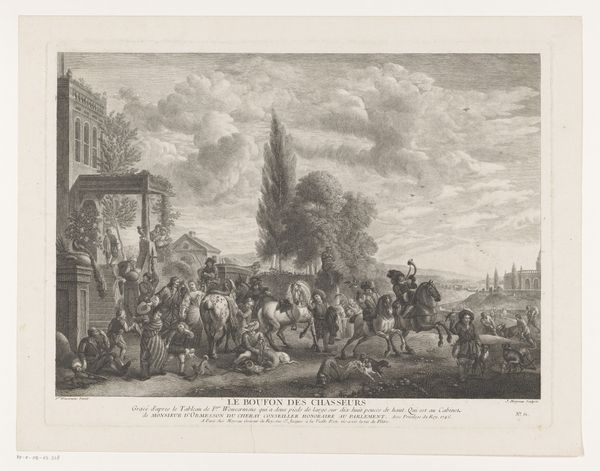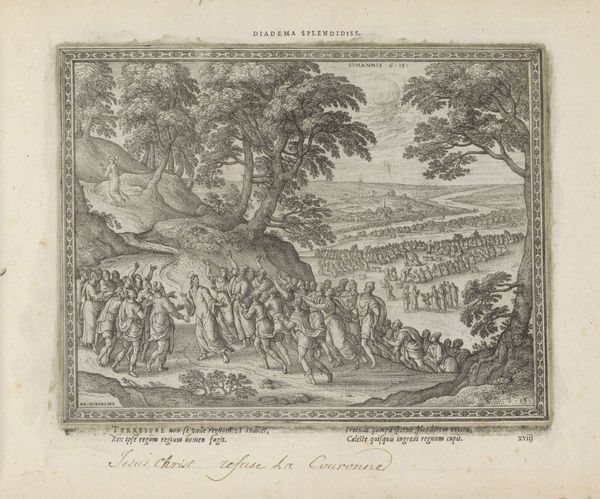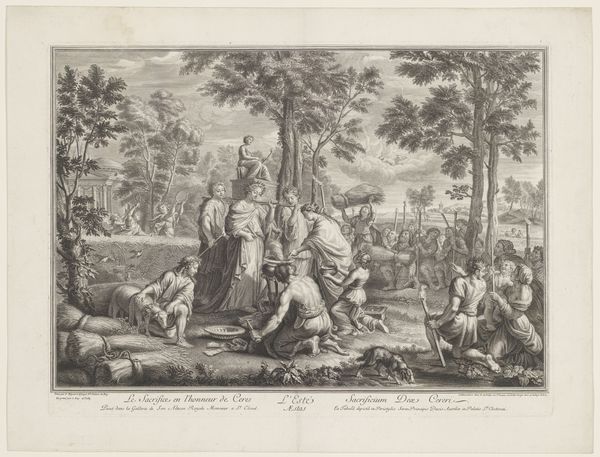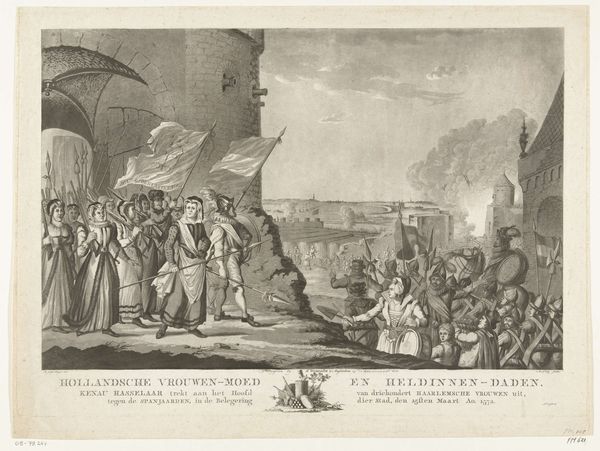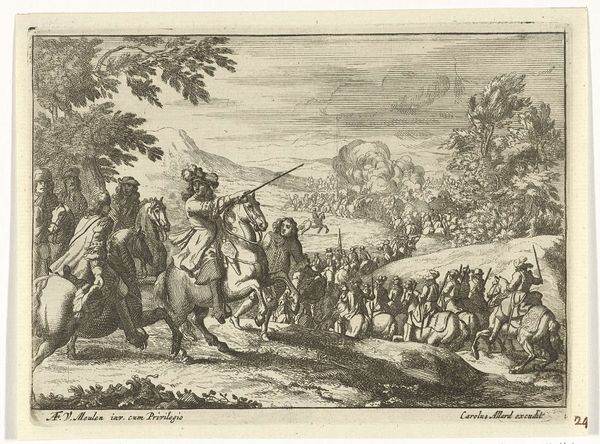
print, etching
#
baroque
# print
#
etching
#
genre-painting
#
history-painting
Dimensions: 10 3/8 x 13 11/16 in. (26.35 x 34.77 cm) (sheet)
Copyright: Public Domain
Editor: Here we have "The Idle Prentice Executed at Tyburn," an etching done in 1747 by William Hogarth, residing here at the Minneapolis Institute of Art. It’s such a chaotic composition! My eyes are immediately drawn to the sheer mass of people. What organizing principles do you see operating in this image? Curator: A very astute observation! Consider the composition's meticulous articulation. Note the deployment of line – how Hogarth harnesses hatching and cross-hatching, achieving varied tonal values. It is through these formal means that a sense of depth emerges and one parses this print, element by element. Editor: So, you’re saying the tonal contrasts guide our eye and break down the chaos? Can you give me an example? Curator: Observe how the strong contrast delineating the gallows contrasts with the background sky. This serves to bracket the whole drama and draw our attention toward that distant focal point. Consider too the foreground wall—the use of closely packed parallel lines makes for an area of low interest. What effect does that foreground wall achieve? Editor: I see, it anchors the frenetic scene and pushes our gaze further back, into the mayhem. I was initially overwhelmed, but now I see it is skillfully constructed! Curator: Precisely! Each deliberate choice in line, form, and the arrangement of figures contributes to an emotionally affecting composition. Close looking reveals intention. Editor: Looking at the totality of all its aspects really enriches my understanding. Thanks! Curator: Indeed! Through formal analysis, the artwork transcends mere depiction and becomes a powerful arrangement of forms, lines, and tones which convey a complex experience.
Comments
No comments
Be the first to comment and join the conversation on the ultimate creative platform.
